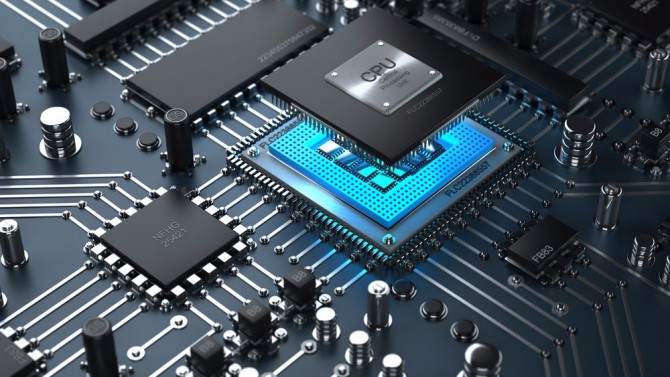After weeks of teasers and leaks, Intel is lastly making its thirteenth Gen processors official in the present day. Intel’s thirteenth Gen desktop CPUs will begin arriving on October twentieth, led by the flagship Core i9-13900K priced at $589. That’s the identical worth as Intel’s earlier 12900K flagship, regardless of Intel’s warning of worth will increase. Intel’s thirteenth Gen announcement comes simply as AMD launches its new Ryzen 7000 processors in the present day in a battle for desktop dominance.
Intel’s Core i9-13900K will ship with 24 cores, 32 threads, and clock speeds of as much as 5.8GHz. Constructed on Intel’s 7 course of and its x86 efficiency hybrid structure, thirteenth Gen processors embody Efficiency cores (P-cores) and Environment friendly cores (E-cores) that cut up workloads intelligently utilizing Intel’s Thread Director, an embedded microcontroller contained in the CPU that screens threads and ensures they’re working on the proper cores.
Intel used this identical structure for its twelfth Gen chips final 12 months, and it’s an analogous method to what Apple has been doing with its Arm-based silicon. As an alternative of cramming new chips filled with power-hungry cores, this P-core / E-core cut up ought to be extra environment friendly. Having mentioned that, these thirteenth Gen chips now eat extra energy in max turbo than their Alder Lake predecessors.
Intel’s thirteenth Gen of processors will embody 22 in whole, led by in the present day’s Core “Ok” processors for the very excessive finish of shopper PCs. Intel is promising as much as 15 % higher single-thread efficiency on its Core i9-13900K and as much as 41 % higher multithreaded efficiency.
Whereas Intel hasn’t bumped the variety of P-cores accessible on its thirteenth Gen processors, the Core i5, i7, and i9 chips all have extra E-cores, which ought to assist in multitasking and multithreaded apps. That works out to eight extra E-cores on the Core i9 and 4 extra on the Core i7 and Core i5 chips.
The bottom frequencies for each forms of cores have dropped throughout the Core i5, i7, and i9 chips. As an alternative, enhance frequencies are up, which might take the Core i9 all the way in which to five.8GHz. That’s 600MHz greater than the 12900K, and on the newest Core i7, it’s 400MHz extra, with the Core i5 at 200MHz extra. Intel additionally teased a 6GHz-capable chip, however the firm isn’t asserting that in the present day.
There’s additionally PCIe Gen 5.0 help with as much as 16 lanes off the processor and DDR5-5600 and DDR5-5200 help. Intel can be sustaining DDR4 compatibility for motherboard makers that need to proceed delivery with DDR4 as a substitute of DDR5. L3 and L2 cache have each been elevated, too.
The true story right here is worth and energy draw. Costs on the Core i9 and Core i7 processors are surprisingly the identical as final 12 months, regardless of Intel warning of worth will increase to its flagship chips earlier this 12 months. The Core i5 is the one processor getting a worth bump, with the Core i5-13600K transferring to $319, up from the $289 pricing of the Core i5-12600K. Equally, the Core i5-13600KF (with out built-in graphics) is priced at $294, up from the $264 of final 12 months’s mannequin. It stays to be seen whether or not we really see these recommended costs from retailers, although.
Whereas worth will increase have solely affected the Core i5 this 12 months, energy necessities are up throughout. All Core i5, i7, and i9 chips have a base energy of 125 watts, however the Core i7 and Core i9 will each want 253 watts for his or her max turbo energy. That’s a 5 % soar from the 241 watts on the Core i9 final 12 months, but it surely’s a large 33 % soar for the Core i7, which strikes from 190 watts final 12 months to 253 watts for the thirteenth Gen. Intel’s Core i5-13600K now wants 181 watts for max turbo, up 20 % from the 150 watts on the Alder Lake model.
The Core i7 and Core i5 energy necessities are stunning, particularly as many decide these chips for gaming after they don’t want the uncooked energy the Core i9 affords.
Intel’s thirteenth Gen processors additionally launch alongside new 700-series chipsets. Current 600-series motherboards will help these new thirteenth Gen (Raptor Lake) chips, however the brand new Z790 motherboards will supply eight further PCIe 4.0 lanes, elevated USB 3.2 Gen 2×2 (20Gbps) ports, and DMI Gen 4.0 for improved throughput entry to peripherals and networking.
The true query can be how nicely the 13900K performs towards AMD’s newest Ryzen 7950X and 7900X chips. Intel hasn’t made these direct comparisons but, but it surely has provided up a handful of benchmarks that present the 13900K each beating and dropping to AMD’s Ryzen 7 5800X3D. We’ll want to check the 13900K to learn the way it actually performs in gaming and past.
Intel’s thirteenth Gen desktop processors will begin delivery on October twentieth, alongside Z790 motherboards. Intel says it can share extra particulars on the remainder of the thirteenth Gen processor household “at a later date.”
:format(webp)/cdn.vox-cdn.com/uploads/chorus_asset/file/24057808/rpl_desktop_chip_angle_2_white_BKG_HighResolution.jpg)




